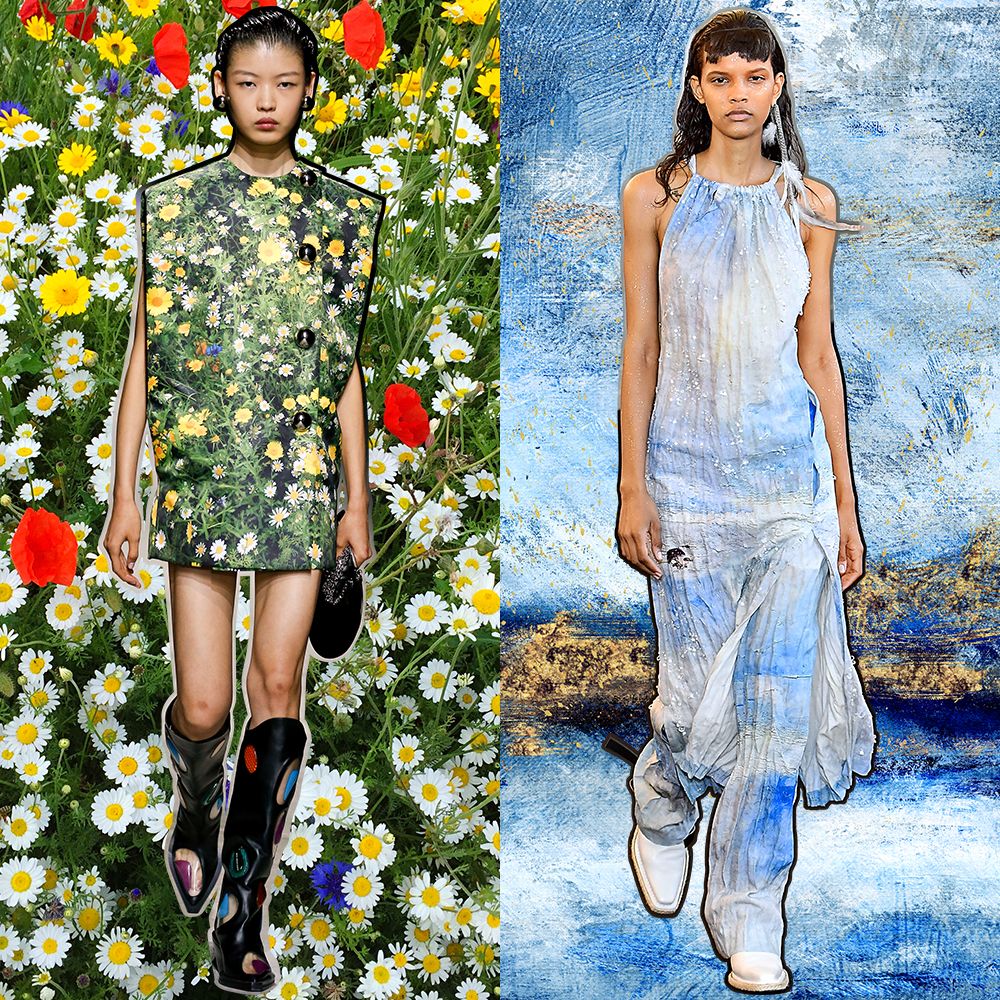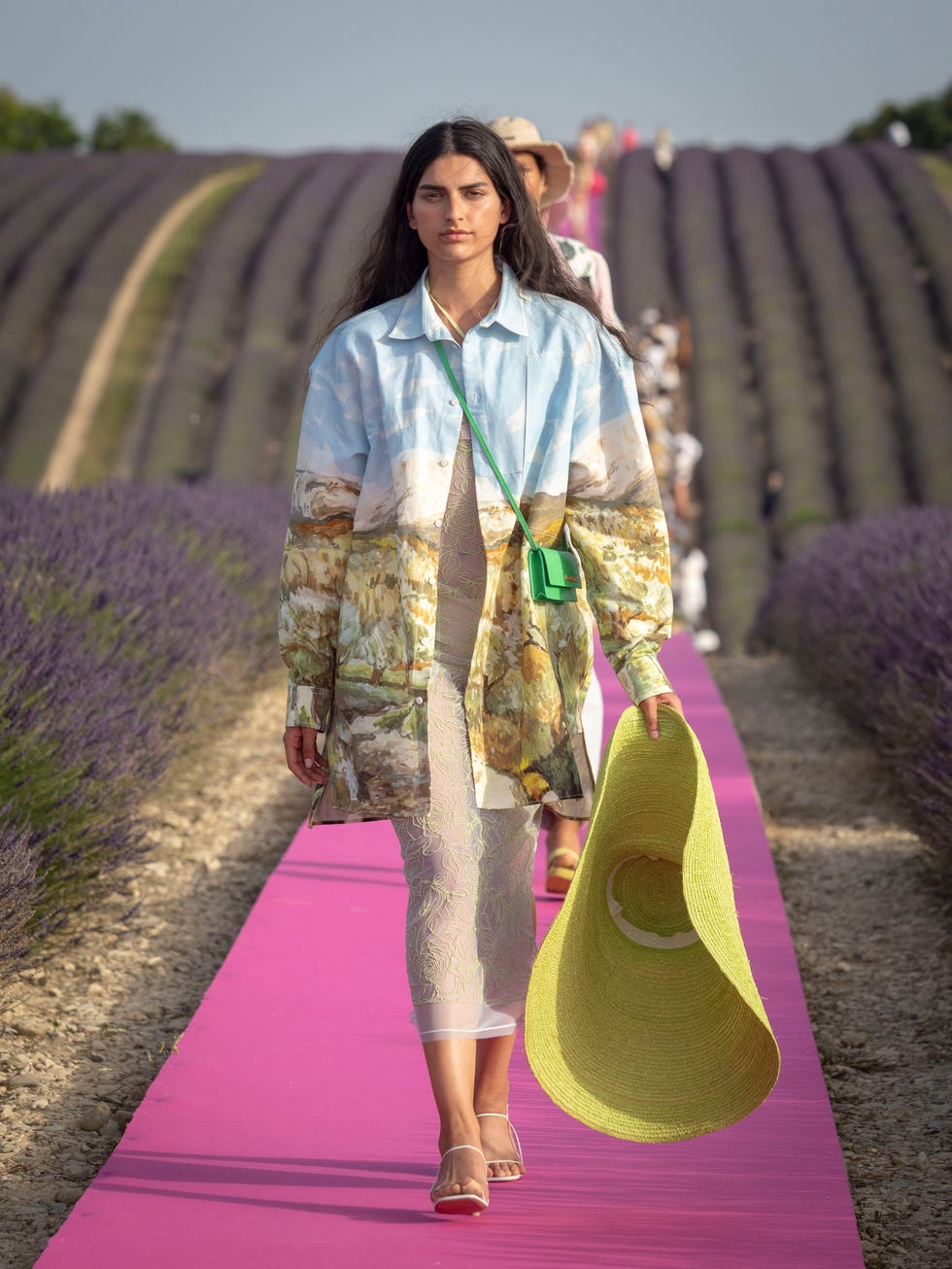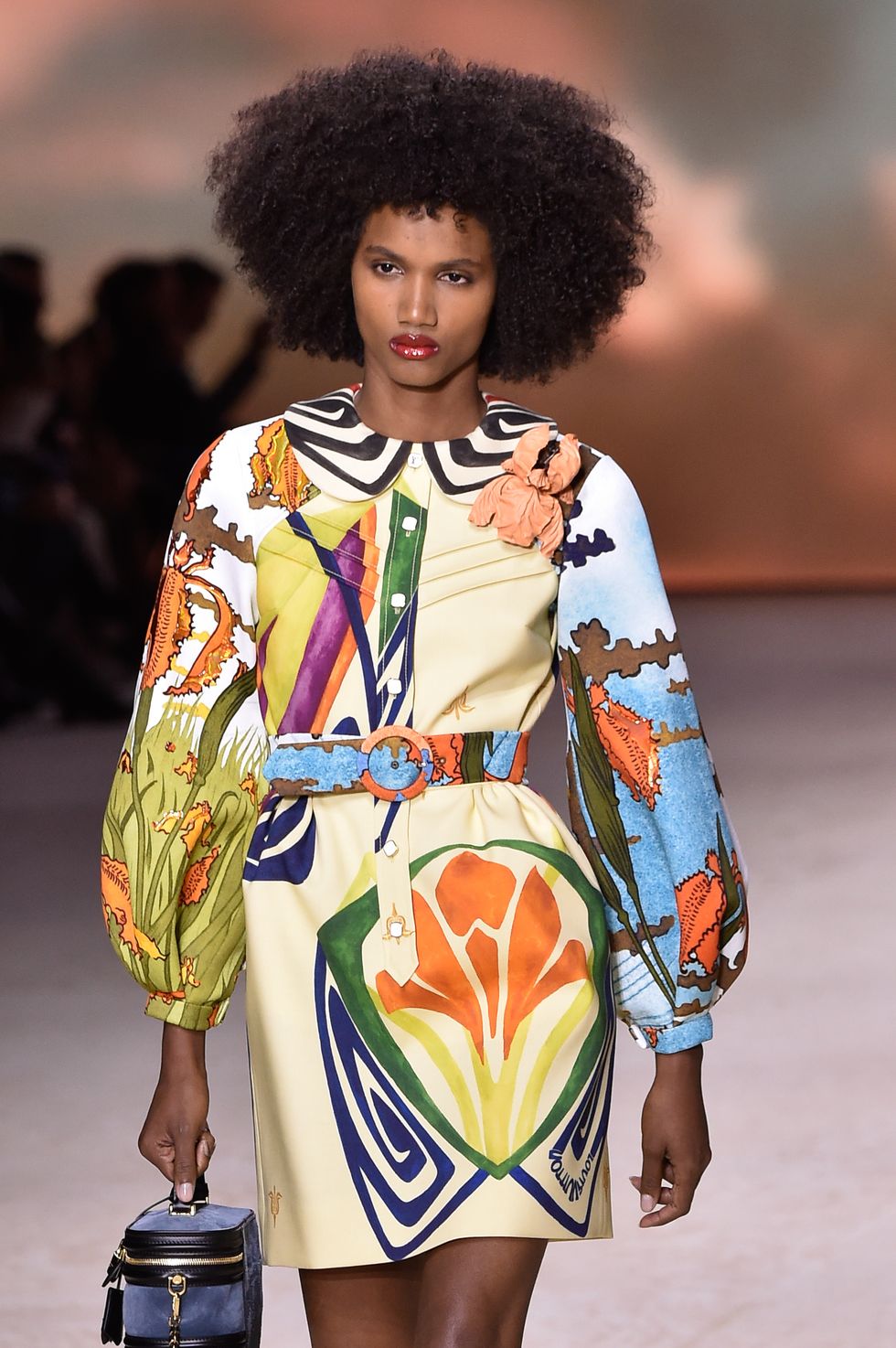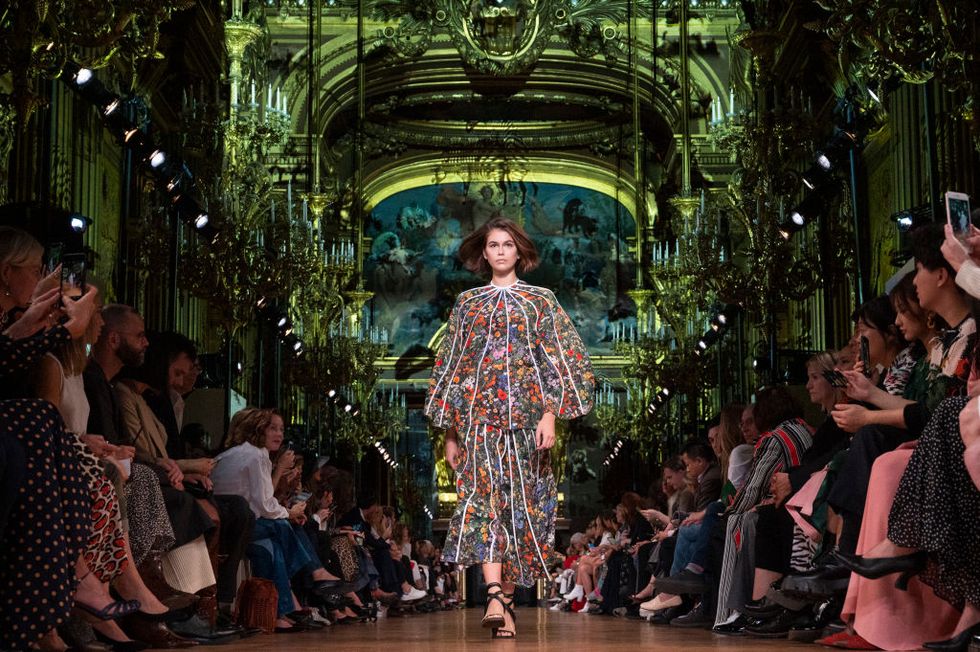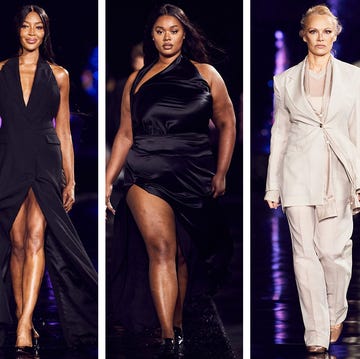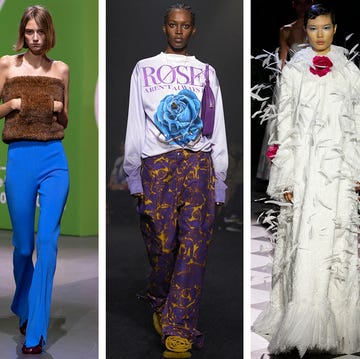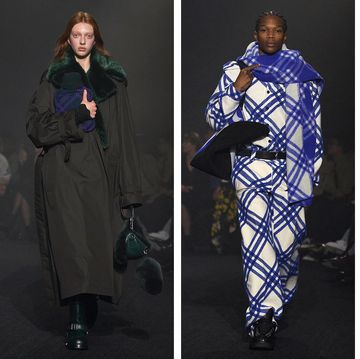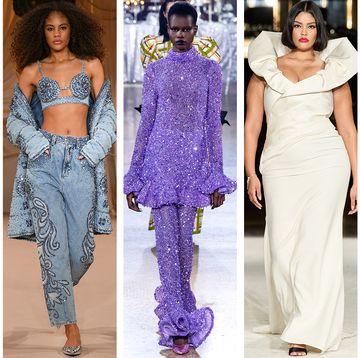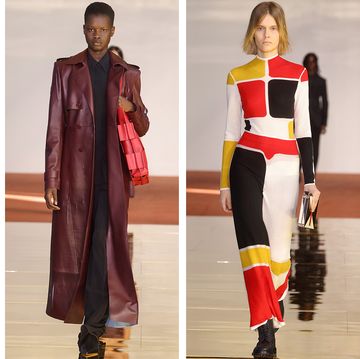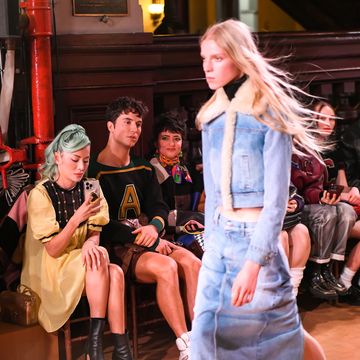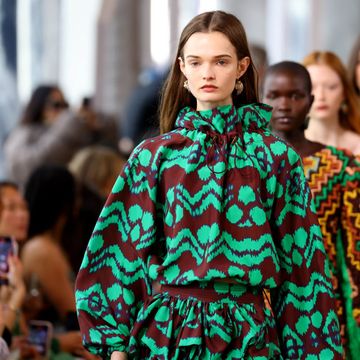Last spring, Lake Elsinore, a small town in California, was overrun with a crop of extremely photogenic poppies. You probably know how this story ends: with the blooms being trampled underfoot by Instagrammers eager to get the perfect shot. It was a potent reminder that when nature meets our brave new digital world, strange things can happen.
The resulting heavily filtered images had an unreal quality, a kind of fetishization of unspoiled nature. So perhaps it wasn’t surprising that we saw similar motifs in the spring 2020 collections. Christopher Kane’s may have been the most literal interpretation. The designer, who has previously drawn inspiration from nature and from sexual fetishes, married the two with this season’s theme, “Ecosexual.” There was a psychedelic daisy backdrop and clothes printed with digitized, too-good-to-be-true patterns: clouds, fields, the ocean, and the night sky. At Stella McCartney, the designer’s own photos of flora in a local park were turned into supersaturated prints. Nicolas Ghesquière dreamed up blooms of Brobdingnagian proportions for Louis Vuitton’s spring collection. And Simon Porte Jacquemus caused a stir with a tenth-anniversary show in his native Provence, where the picture-postcard-on-acid backdrop of lavender fields was enhanced by clothes adorned with painterly landscapes.
Florals for spring are not, as has been established, groundbreaking. But Huji-filtered superblooms on a dress? That’s far less expected. The term uncanny valley was coined by robotics scientist Masahiro Mori to describe the revulsion humans feel toward robots as they come to appear more and more lifelike. (Think of our collective fascination—and discomfort—with “realistic” simulations like the CGI model/influencer Lil Miquela.) This wariness has tended to apply more to representations of humans than of nature, but as pristine wilderness becomes rarer and more threatened, these heightened representations of it feel more uncanny.
For Acne Studios’ Jonny Johansson, the landscapes of his countryman August Strindberg (better known as a playwright, he was also a visual artist) were the starting point for spring. The paintings were enlarged, then digitally printed onto fabric, some with Lurex or metal running through them for a touch of artificiality. “I think in today’s world, this idea of escape is more important than ever,” the designer says. “I was interested in exploring the possibility of contemporary life within nature, embracing the practicalities of living off the land.” Sequestered in the woods with no one to answer to: It’s a Thoreauvian fantasy that everyone has had at one time or another. But as we’re losing the wild in our daily lives, access to and time in nature itself is being seen as a luxury, especially for city dwellers. Says Kane, “I think the images are the next best thing to the real deal.”
One can’t help thinking that in light of the climate crisis, this effect is accelerated. McCartney—whose collection was, she says, 78 percent sustainable—is one of the industry’s biggest proponents of conservation. “I want to do [it] in a way that is invisible, without sacrificing style for sustainability,” she says. Her new ultradecorative collection reflects this approach. And the climate crisis is never far from Kane’s mind, either. “It makes me value [nature] more than ever,” he says. “Fundamentally, ecosexual means to love the earth, be it physically or metaphorically. It stands as an important reminder during this climate crisis that we need to care for our planet.”
Top image: Christopher Kane Spring 2020 (left) and Acne Spring 2020 (right.)
This article appears in the March 2020 issue of ELLE.

Véronique Hyland is ELLE’s Fashion Features Director and the author of the book Dress Code, which was selected as one of The New Yorker's Best Books of the Year. Her writing has previously appeared in The New York Times Magazine, The New Yorker, W, New York magazine, Harper’s Bazaar, and Condé Nast Traveler.
